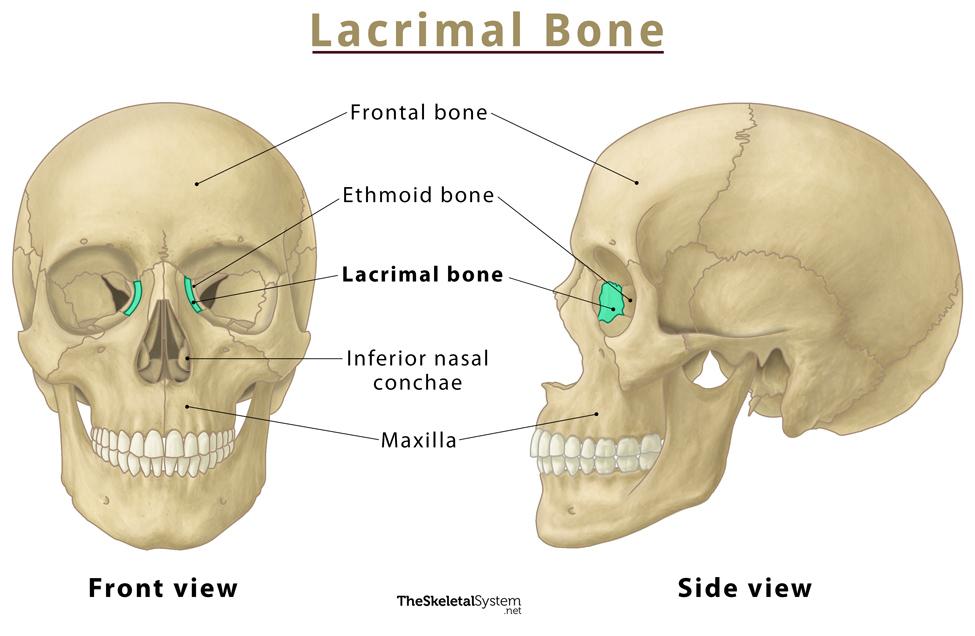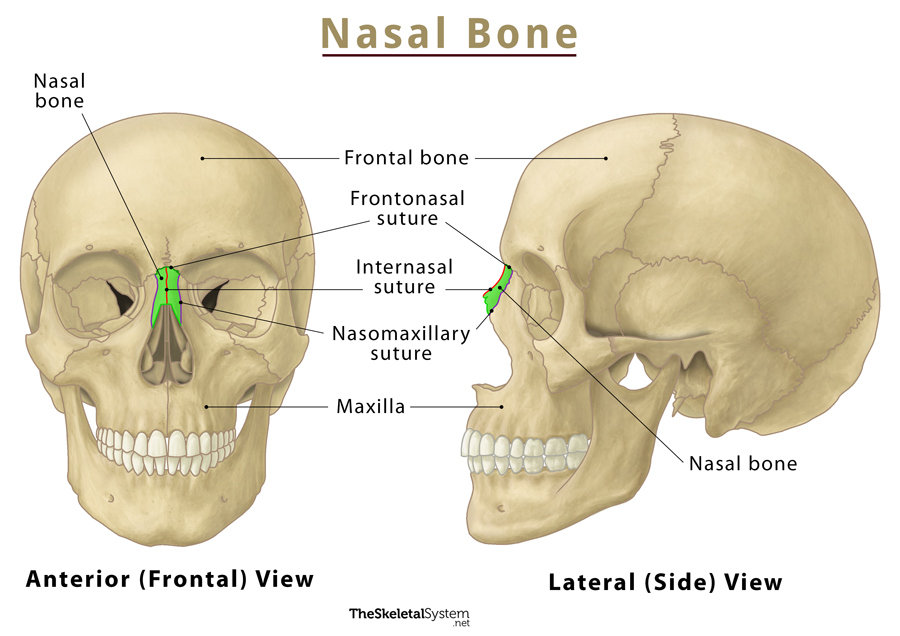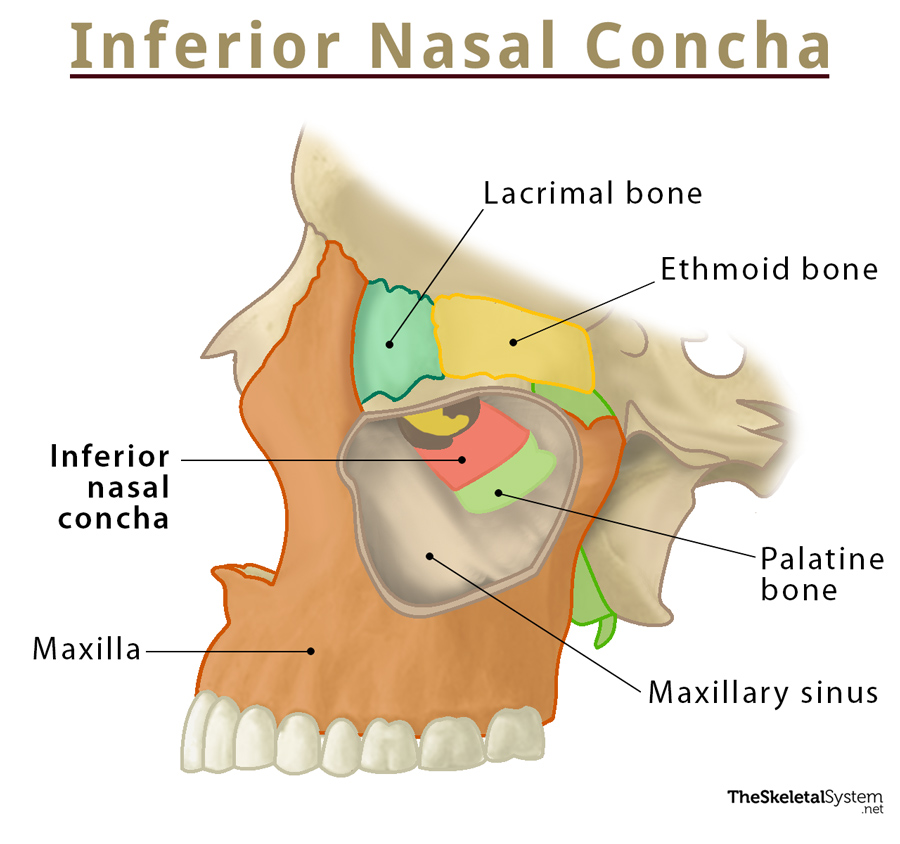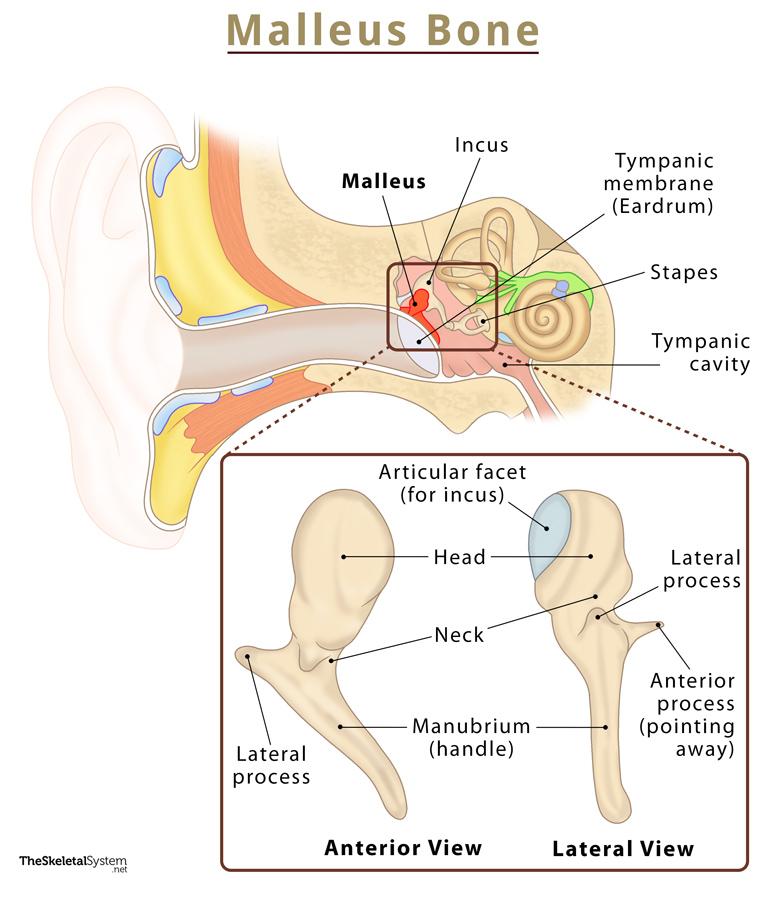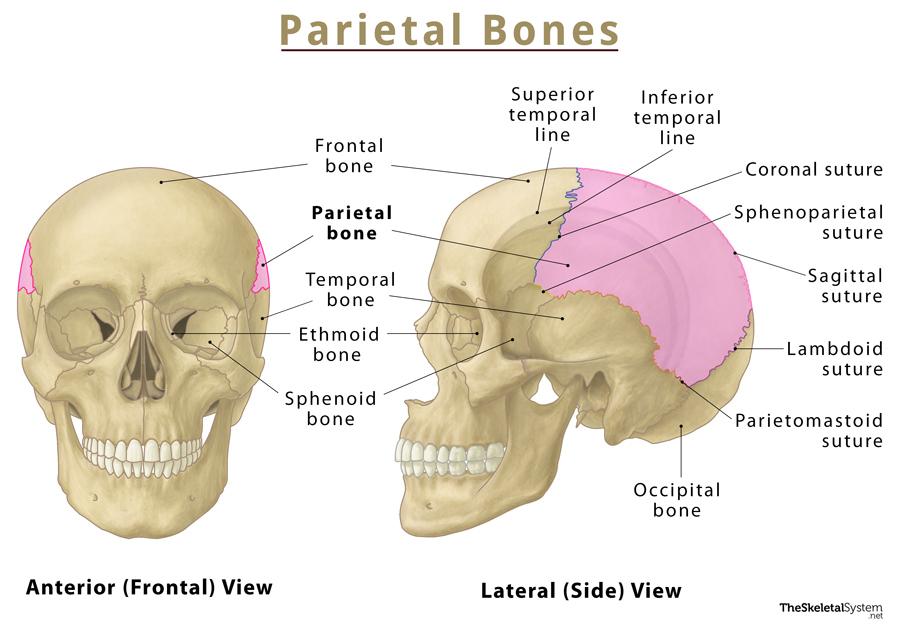Lacrimal Bone
Table of Contents:
Published on April 5th 2022 by staff
What is the Lacrimal Bone
The lacrimal bone is a tiny, fragile facial bone with a complex structure and vital functions. The paired bone is roughly the size of the little fingernail, making up the anterior part of the eye socket’s medial wall. Its name is derived from the Latin word ‘lacrima’, meaning ‘tear’, as it supports the lacrimal apparatus of the eye.
Where is the Lacrimal Bone Located
Both lacrimal bones are located in the medial wall of the eye socket or orbit. They are not visible when looking at a skull from the front because they are hidden behind the nasal bones.
Quick Facts
| Type | Flat bone |
| How many are there in the human body | 2 (1 in each eye socket) |
| Articulates with | 4 bones: frontal bone, ethmoid bone, inferior nasal concha, and maxilla |
Functions
The main function of this bone is to provide structural support to the eye socket and lacrimal apparatus, a system consisting of the tear gland that produces tears, and the nasolacrimal duct, which drains tears from the eye to the nose.
Anatomy
These rectangular bones consist of two surfaces and four borders.
Surfaces
Among the two surfaces, the one facing the eye is called the orbital or lateral surface, and the one facing the nose is called the medial or nasal surface.
1. Orbital surface
This surface features a prominent narrow vertical ridge called the posterior lacrimal crest, dividing the surface into anterior and posterior sections. The anterior section houses the lacrimal sac and lacrimal duct, whereas the posterior section forms a part of the posterior wall of the eye socket.
The crest also has a longitudinally positioned groove called the lacrimal sulcus at its anterior end. The inner margin of this sulcus forms the lacrimal fossa by uniting with the frontal process of the maxilla. The upper part of this lacrimal fossa houses the lacrimal sac, whereas the lower part contains the nasolacrimal duct.
The smooth posterior end of the posterior lacrimal crest forms the medial wall of the eye socket. The orbicularis oculi muscle that helps to close the eyelids attaches here.
The posterior lacrimal crest ends in a small hooked shape called the lacrimal hamulus that articulates with the lacrimal tubercle of the maxilla. It also produces a rounded orifice that houses the lacrimal canal.
2. Nasal surface
This surface features a longitudinal groove or furrow along its length that runs in the same direction as the posterior lacrimal crest. The anterior portion of the furrow forms a part of the middle nasal meatus, whereas its posterior portion articulates with the ethmoid bone.
Borders
The lacrimal bone articulates with other skull bones via these four borders.
1. The anterior border articulates with the maxilla’s frontal process.
2. The posterior border articulates with the orbital lamina of the ethmoid bone.
3. The superior border articulates with the frontal bone.
4. The inferior border gets divided into two parts by the inferior edge of the posterior lacrimal crest. The part of the border placed posteriorly to the crest articulates with the orbital plate of the maxilla, whereas the part located anteriorly extends downward. This extension that travels downwards is called the descending process. It articulates with the lacrimal process of the inferior nasal concha and encloses the bony canal for the nasolacrimal duct.
Muscle Attachment
As stated, the orbicularis oculi muscle that closes the eyelids and helps with tear drainage gets inserted into this bone.
Articulations
It articulates with four bones: the frontal bone, ethmoid bone, maxilla, and inferior nasal concha.
Ossification and Development
Around the 12th week of gestational period, a single ossification center appears within the cartilaginous membrane covering the cartilaginous nasal capsule. The lacrimal bone develops from this single ossification center.
References
- Lacrimal bone – Kenhub.com
- Lacrimal bone – Radiopaedia.org
- Lacrimal Bone – Osmosis.org.
- Lacrimal Bone Anatomy – Getbodysmart.com
- Lacrimal Bone – Sciencedirect.com

